Want to make a wine representative from Spain’s Rías Baixas region suddenly go quiet? Ask them what other wine they’d compare to Albariño.
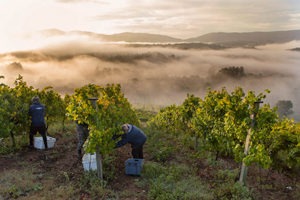 Dead silence. Crickets at most.
Dead silence. Crickets at most.
Given time to consider the question, their position is essentially: “It’s not like anything.”
That was the case earlier this month during Master Sommelier John Szabo’s “Wines From Green Spain” presentation, which provided a little insight to this unique but growingly popular Albariño grape.
To provide some frame of reference, if you appreciate the lightness of Pinot Grigio, the refreshing acidity of Sauvignon Blanc and the stone fruit, minerality and floral character of, say, dry Riesling, you need to give this wine a try. The fact that it’s also almost always value-priced doesn’t hurt either.
But first a quick pronunciation guide, so that you’ll sound like an expert around friends: Rías Baixas (pronounced Ree-ahs by-shas—and try to roll the ‘R’ to really show off) is home to the native grape variety Albariño (pronounced ahl-buh-REEN-yoh).
THE PERFECT SEAFOOD WINE
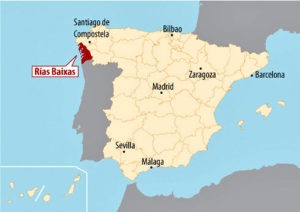 The region of Rías Baixas (Spanish for “lower rivers”) occupies a misty, lush, green corridor of northwest Spain on the cool Atlantic coast, an area known as Galicia.
The region of Rías Baixas (Spanish for “lower rivers”) occupies a misty, lush, green corridor of northwest Spain on the cool Atlantic coast, an area known as Galicia.
There are five subzones within this compact area, each with its own microclimate. Aromas range from “crushed green citrus to orchard fruit, peachy, floral—almost Viognier-like—but put it in your mouth and you get the razor-sharp acidity and Atlantic minerality and salinity,” Szabo notes.
More than 99% of all wine produced across this region is white, and of that, 96% is Albariño. So, go figure, they’re pretty good at making it. And it’s a perfect area to do so. As the region’s website notes, the vines share “the same mineral-rich soils and cool climate as the world’s other renowned white wine-producing regions, including France’s Loire Valley, New Zealand, and the Rhine region of Germany.”
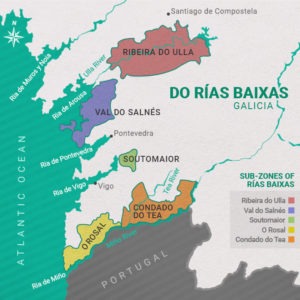
Highlighting the five sub-regions of Rías Baixas.
That said, Albariño’s domination here a relatively recent one. Although this thick-skinned grape was brought here more than 2,000 years ago, as recent as 1975 there were only a couple hundred hectares planted. Now there are more than 4,000!
The estuaries reaching in like arms from the Atlantic mix freshwater and saltwater in sustaining a marvellously rich maritime ecosystem. They say what grows together goes together, so it’s no shock that Albariño pairs perfectly with the fresh local seafood (scallops, lobster, sole, etc.), as well as chicken, salads and other dishes. (I love that the website even recommends pairing it with takeout dishes, “Spicy and flavourful cuisines like Chinese, Indian and Thai usually overpower wines, but Albariño’s low alcohol and ripe fruit flavours match beautifully with the fruity chili notes.”)
A WOMAN’S TOUCH
More than half of the winemakers in Rías Baixas are women, but it’s to be expected. Galicia is a very matriarchal culture, with much of its past seeing the males occupying the role of fishermen, while the women managed the family and tended to the vineyards.
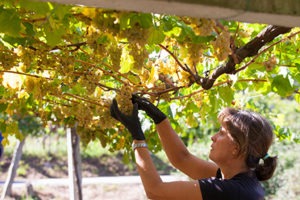 Male or female, though, those who fashion the wines in this part of the world strive to leave a regional imprint on them. “Many Rías Baixas winemakers now favour fermenting their grapes with the native yeasts found in their vineyards,” the region’s websites notes. “Though it can be challenging to make wine with wild yeasts, they believe the resulting aromas are a more authentic reflection of the characteristics of the Albariño grape and their terroir.”
Male or female, though, those who fashion the wines in this part of the world strive to leave a regional imprint on them. “Many Rías Baixas winemakers now favour fermenting their grapes with the native yeasts found in their vineyards,” the region’s websites notes. “Though it can be challenging to make wine with wild yeasts, they believe the resulting aromas are a more authentic reflection of the characteristics of the Albariño grape and their terroir.”
There’s also a signature subtle salinity in the wines—the result of the recurring spray of sea salt on the vines and the grapes, which invariably makes its way into the winery and the tanks.
It’s all part of the reason why Rías Baixas winemakers have a hard time comparing Albariño to anything in particular.
But you always sample a bottle or two yourself to conduct your own research.
And if you’re looking for a great, affordable introduction, here’s an easy one:
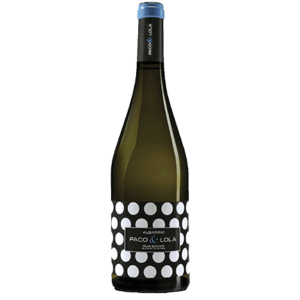 Paco & Lola Albariño 2020 — Val do Salnés, Rias Baixas, Spain ($19.95)
Paco & Lola Albariño 2020 — Val do Salnés, Rias Baixas, Spain ($19.95)
I’m a big fan of this wine, easily recognized by its distinctive polka dot label. Produced through a cooperative structure developed in 2005, this vegan-certified wine is available at the LCBO or by the case from importer Azureau Wines & Spirits. On the nose there’s lime, grapefruit, pear and honeydew melon tinged with white flowers. On the palate, it’s as bright and fun as its label—citrus-crisp and dry with great length and that telltale hint of salinity on the finish. 90
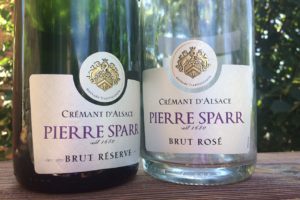



Leave a Reply
Your email is safe with us.